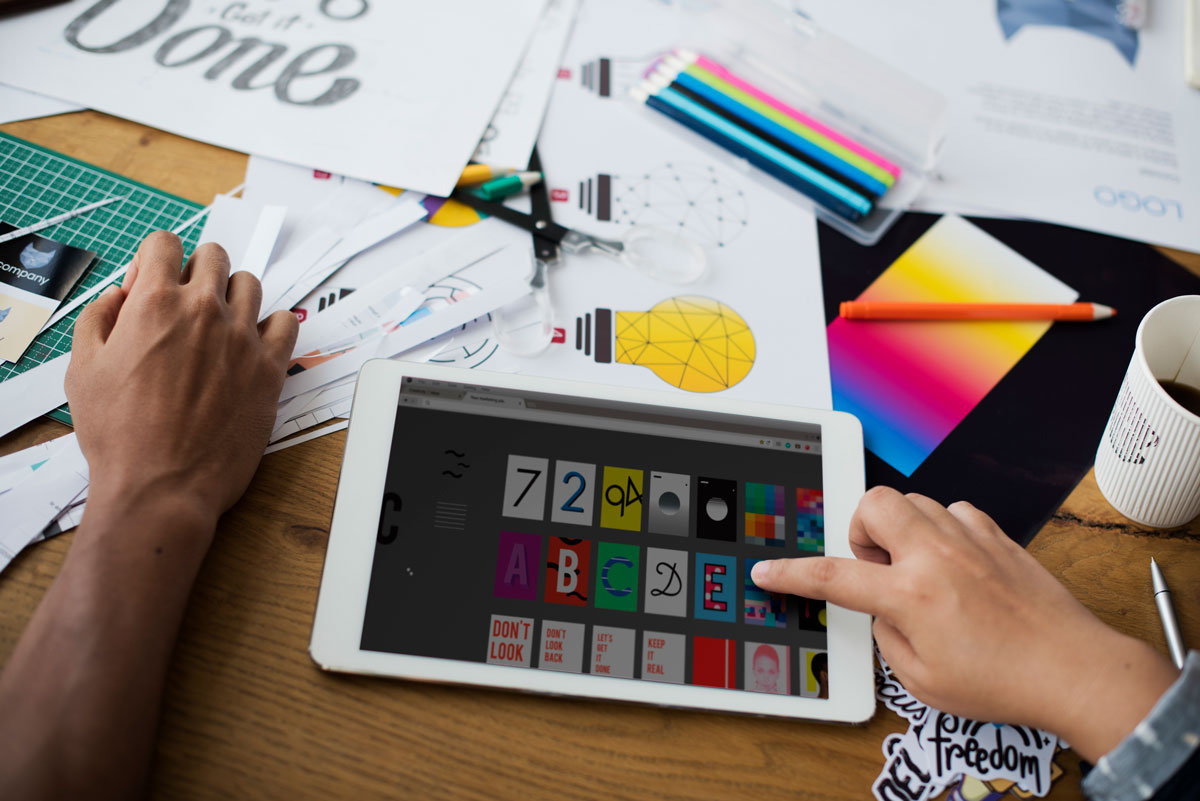Ever puzzled over how captivating and user-friendly websites are brought to life? The credit goes to the ingenious work of a website designer. In this article, we're going to explore the exciting world of web design, diving into everything that combines art and tech in this field. We illuminate everything – from what is a web designer to their indispensable skills and more. So, brace yourself, and let's plunge into the world of web design! In the ever-changing universe of the internet, web designers significantly contribute to defining our digital experience. They act as skilled craftsmen of the cyber world, blending their creative panache with technological proficiency to fabricate engaging and accessible websites. A website designer is akin to a maestro, harmonizing diverse components to ensure the site engages its visitors and offers an unimpeded user journey.
What is a Web Designer?
A web designer's job involves creating and designing a website's look, layout, and visual features. They focus on the interface - how people use and interact with the website. It's important to understand that a web designer differs from a web developer. Both contribute to building a website but in different ways.
What does a web designer do? They worry mainly about how the website looks and feels, while a web developer is in charge of the technical side and how well the website works.
Simply put, a web designer is a specialist who conceptualizes, plans, and develops a website's structure and aesthetic components. They are the masterminds behind a website's appearance and user interface, ensuring it is aesthetically pleasing, approachable, and useful. As they integrate design principles with technical know-how to create immersive digital experiences, web designers are sometimes regarded as the link between creativity and technology.
Understanding the Role: What Does a Web Designer Do?
1. Brainstorming and Planning
Web designers initiate the web development process by brainstorming ideas and planning the website's overall structure. They collaborate with clients or stakeholders to understand the project's objectives, target audience, and design preferences.
2. Designing User Interfaces
A web designer's main job is to make user-friendly websites. This means they design how the site looks, how you move around it, and the parts you can interact with. They do this to make sure anyone visiting has a smooth and fun experience browsing the site.
Incorporating Visual Elements
Visual elements are the soul of any website. Designers select appropriate images, graphics, and multimedia elements that align with the website's theme and resonate with the brand.
3. Ensuring User Experience
User Experience (UX) is crucial in determining a website's success. Web designers optimize the website's usability, accessibility, and overall flow to provide users with a positive experience.
4. Collaborating with Developers
Web designers team up with web developers to make their designs a reality. They give design resources and work together during the creation process to make sure the final website matches their initial idea.
What Makes a Good Web Designer?
The qualities that set apart a good web designer from the rest include:
1. Creativity and Attention to Detail
A good web designer possesses a keen eye for detail and creativity to craft visually stunning and unique designs that stand out.
2. Understanding of Web Pages
They must have a profound understanding of web pages, their structure, and the flow of information, ensuring easy navigation for users.
3. Technical Skills
A web designer must have proficiency in HTML, CSS, and JavaScript to implement their designs into functional web pages.
4. Knowledge of UX Design
Understanding user behavior and incorporating UX best practices helps create user-friendly and intuitive interfaces.
Familiarity with Design Tools
Utilizing design software like Adobe Photoshop, Sketch, or Figma aids in creating and presenting design concepts efficiently.
The Role of Visual Design in Web Design
Visual design is at the core of web design. It encompasses various aspects, such as:
Color Schemes: Select appropriate color palettes that align with the brand identity and evoke the desired emotions in users.
Typography: Choosing suitable fonts for the website's content ensures readability and enhances overall aesthetics.
Layout and Composition: Ensure everything you put in your design looks good together and is balanced. It should catch the eye.
Images and Graphics: Incorporating high-quality images and graphics that support the website's message and resonate with the target audience.
Technical Skills Required for Web Design
A web designer must possess various technical skills to excel in their role. Some essential technical skills include:
HTML, CSS, and JavaScript: Being skilled in languages like HTML, CSS, and JavaScript helps a web designer to code and put their designs into practice effectively.
Responsive Design: Designers need to create websites that can easily adjust to different devices such as computers, tablets, and smartphones.
Cross-Browser Compatibility: Ensuring that the website functions consistently across various web browsers.
Image Editing: Basic image editing skills to resize, crop, and optimize images for web use.
The Impact of UX Design in Web Design
User Experience (UX) is the driving force behind successful web design. Key aspects of UX design include:
User Research: Researching to understand user preferences, pain points, and behavior.
Wireframing and Prototyping: Creating wireframes and interactive prototypes to visualize the website's structure and flow.
Usability Testing: Evaluating the website's usability by testing it with real users to identify areas of improvement.
Iterative Design: Continuously refining and enhancing the design based on user feedback and analytics.
Conclusion
Web designers are like builders in the online world. They use their artistic skills and technical knowledge to make websites that look good and are easy to use. Their work influences the internet experience of many people all over the world. By understanding web designers' core responsibilities, skills, and impact, we can appreciate the art and science behind every website we encounter.
FAQs
1. What tools do website designers use?
Web designers often use tools like Adobe Photoshop, Sketch, Figma, and Adobe XD for design purposes.
2. Is coding knowledge necessary for web designers?
While coding knowledge isn't mandatory, proficiency in HTML, CSS, and JavaScript can significantly enhance a web designer's capabilities.
3. How does responsive design benefit websites?
Responsive design ensures that websites adapt to various devices, improving user experience and accessibility.
4. What role does color psychology play in website design?
Color psychology influences user emotions and actions, making it essential for web designers to choose appropriate color schemes.
5. What are the key components of a compelling user interface?
A compelling user interface includes intuitive navigation, clear call-to-action buttons, visually appealing images, and consistent branding elements.




